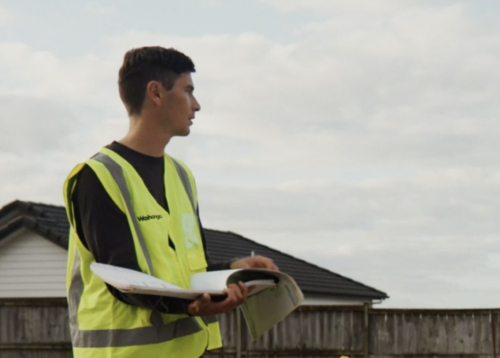What Is A Customer Persona And How Can It Help Your Business?
Customer personas are detailed descriptions of imaginary customers. Each one represents a type of customer your business wants to reach. Mainly used for marketing and sales purposes, they also make it easier to focus business decisions - such as product or service innovations - on what your ideal customers really want.
How to create a customer persona
Creating customer personas involves quite a lot of research to first identify your customer groups and then bring each one to life as though it’s someone you know really well. To help get you started, we’ve put together these simple steps.
1. Identify your customer types
Start by making a list of your best customers. Apart from how much customers spend, look at things like repeat business, positive feedback, referrals to other customers and willingness to engage with your business. Look back through your customer data, but also talk to your sales, service, delivery and office people, who have one-on-one contact with your customers.
It can be helpful to repeat this exercise for your worst customers, as well as potential customers you invested a lot of time on but who never purchased from you. This can help you form personas of customers you want to avoid.
Here some things to focus your research on for each person:
- The path they took to become a customer and why
- Their position or job title
- The industry they work in
- The products or services they purchased and why
- Their main challenges or pain points
- Their age group
- Their location
- Their interests and the things they value in life
- The media the use
- How and when they prefer to communicate with you and why
2. Sort them into groups
As your research grows, you’ll start to notice that groups of customers have a few things in common. It might be the products or services they choose, their industry and their job role. Or it might be their age group, challenges and media preferences. Initially there will be customers who seem to belong to more than one group, but the aim is to eventually form a small number of groups that have as much in common as possible.
3. Learn more about each group
To create useful personas, you need to describe each fictitious person as though you know them very well. You need to go beyond knowing them as a customer to knowing them as a person.
The best way to build this understanding is to choose a few customers from each group and meet with them one-on-one. You might be able to invite them to join you for an informal coffee meeting, explaining that you like to follow up with customers to understand what works and what doesn’t, so you can better help other businesses and people like them.
Use the opportunity to test the assumptions you made in forming your initial customer groups and to deepen your understanding of the people in them. Try to avoid turning the meeting into an interview, but do have plenty of open-ended questions ready. For example, you might acknowledge there are plenty of options they could have chosen in the market and ask them why they chose your product or service. You could also ask what they like about the product or service now and how it could be improved. Ask them if anything has changed since they bought from you and whether they’d make the same choice today. Ask about the main challenges their industry is facing and so on. Also, it helps to ask how they keep up with what’s happening in their industry might give you some insights into the media they use.
To learn more about what they value, you can also ask about how they enjoy their work or role, how long they’ve been with the company, what attracted them to it, whether it’s a good company to work for, what they value etc.
To learn more about them as a person, without sounding creepy, you can simply ask how their weekend was, whether they have anything special coming up this weekend, or simply say ‘goodness how do you unwind from all that work pressure?’. It’s usually OK to ask if they have children, their children’s ages, what school they’re at, are they sporty and so on. It helps build empathy if you talk about your own children, or nieces and nephews at the same time.
The secret is to identify what you want to know more about and to have a bunch of questions ready that you can use when it seems appropriate to do so.
At the end, don’t forget to thank them for helping you gain a better understanding of what customers like them need. You could also invite them to contact you if they have any feedback in the future or if there is anything your business can do for them. Remember to make notes as soon as possible after the meeting, while everything is fresh in your mind.
4. Write your detailed customer personas
After checking that your initial customer groups are still valid, it’s time to write a persona for a fictitious person that best represents each group. Here are some typical headings to use.
- Background: Start by giving the persona a name and a job title or role. Continue by describing their qualifications or history and why they chose this role.
- Demographics: Choose a typical age, gender, location, income etc.
- Personality: Are they serious or fun-loving, what do they care about, what are their main likes and dislikes, how do they prefer to receive information from your business, are they a social networker or more of a solo operator.
- Goals: Choose some typical goals for this type of customer. Some will be business related; others more personal. Don’t limit yourself to goals that relate to your product or service - try to build a complete picture.
- Challenges: Write down what this type of customer is typically struggling with, their common pain points at work and beyond.
- How you can help: Identify what your business can do to help them overcome challenges and reach their goals. Include the types of information you could provide that would grab their interest.
The final step is to use all of this information to write an engaging and memorable story about each persona. Imagine you are describing a character in a book. It’s OK to include some emotive words and quite specific fictitious details to bring the person to life. It can also help to find a photo library image of someone that fits each persona.
If you sell to businesses, your personas will be more about the person and their work. If you sell to individuals, your personas will include less about the person’s work and more about their wider life. Either way, you’ll have an easy-to-remember summary of who they are and what matters to them.
5. Put your personas to work
The whole point of developing personas is to ensure everything you do has the customer in mind. Everyone in your business should be introduced to the personas and given the chance to get to know them well. Every decision you make and the way you go about your business can now have your personas in mind.
If you have a persona called ‘Bill the sheep farmer’, for example, you can ask how a product or service improvement will help Bill. When targeting Bill’s customer group, you can choose marketing messages, a tone and manner, and delivery channels that will resonate with Bill. When choosing between different community groups to support, you could think about which one Bill would support. You could even ask whether your office hours suit Bill, and so on.
Whatever business insurance you need, we've got you covered
We know how busy you are, and owning a small business takes 'busy' to a whole new level. Let us handle some of the stress for you, so you can get back to what you love. Insurance can be tricky, we get it. It’s a necessary evil, we’re not offended. We’re all about clear and no-nonsense get-on-with-it business insurance. For more information visit: state.co.nz/business.
You might also like...
-
 March 2023Business Blog | State Insurance
March 2023Business Blog | State InsuranceThe pitfalls and dangers of running a business
-
 March 2023Business Blog | State Insurance
March 2023Business Blog | State InsuranceHow to grow a business and take risks
-
 October 2022Business Blog | State Insurance
October 2022Business Blog | State InsuranceSmall Biz Support
